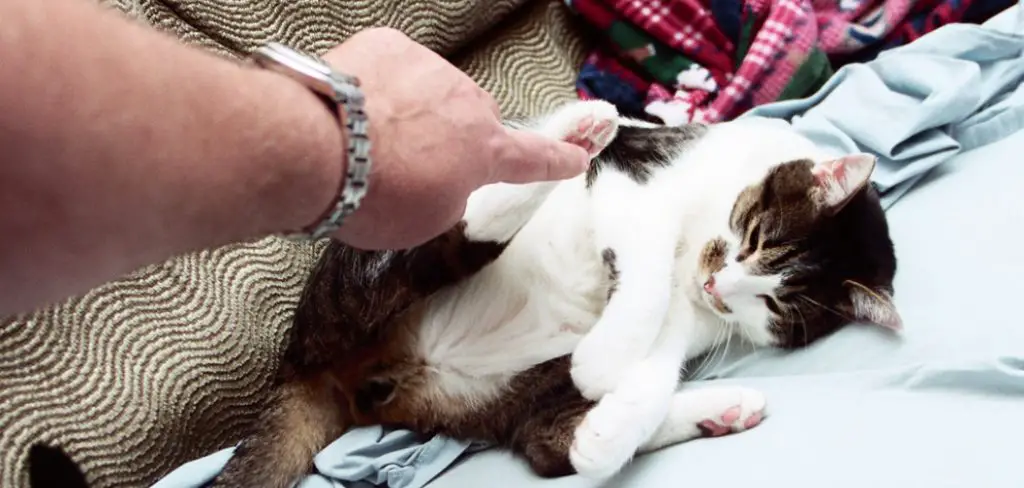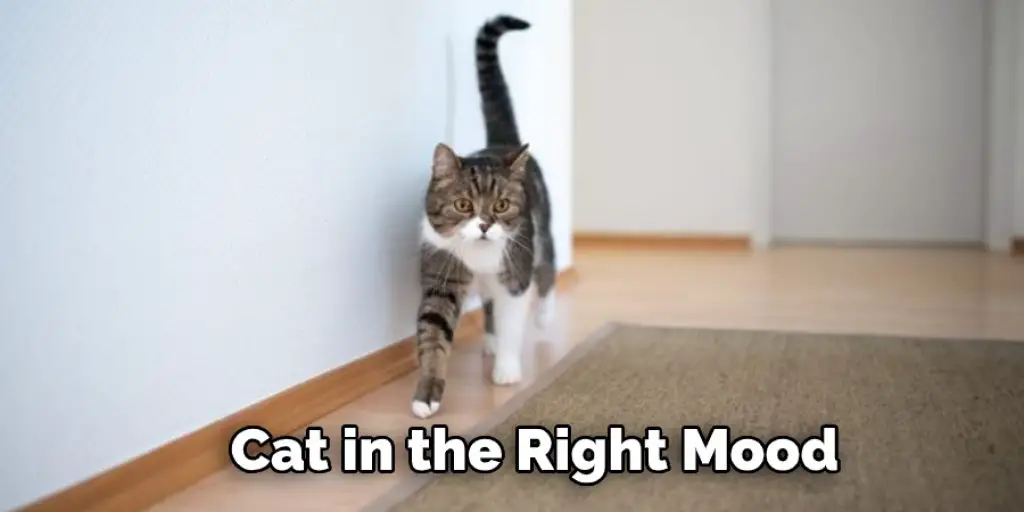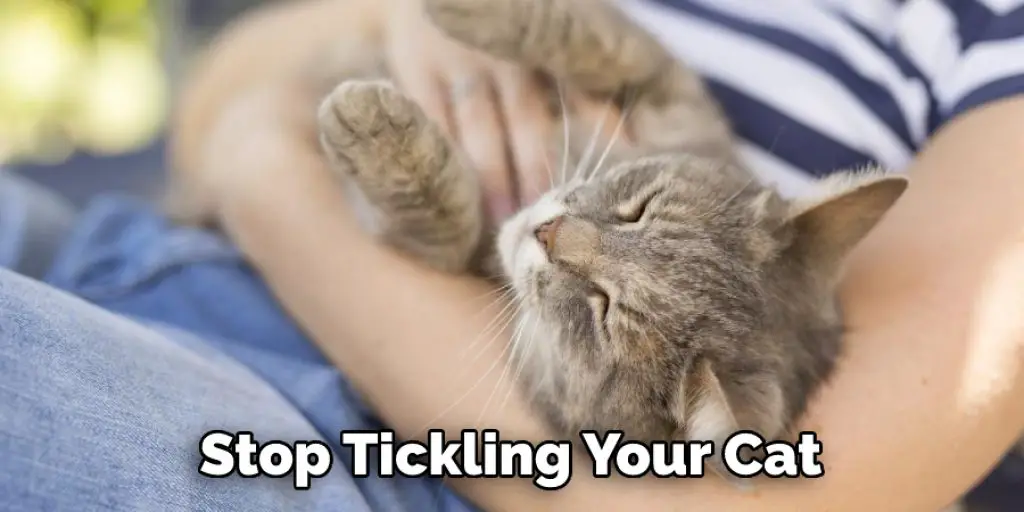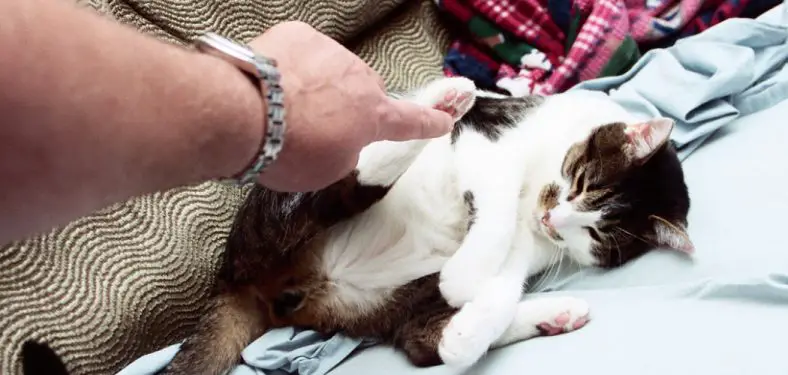There’s something about a cat that just makes you want to tickle it. Maybe it’s the way they always seem to be in such a good mood, or maybe it’s their soft fur. Whatever the reason, tickling a cat is definitely a fun experience. In this blog post, we’ll teach you how to tickle a cat in the most effective way possible. So get ready to have some laughs – your kitty will thank you for it!

Contents
What Is Tickling a Cat?
Cats are unique creatures with their own quirks and behaviors that can be puzzling to us. One such behavior is when they appear to enjoy being tickled. This might seem counterintuitive, as most animals dislike being touched this way. However, a few possible explanations exist for why cats might enjoy tickling.
For one thing, it could simply be that they enjoy the sensation of being touched gently. However, cats also have very sensitive whiskers, and the vibrations caused by tickling might feel good to them. Additionally, some experts believe that tickling helps to bond cats with their owners.
Whatever the reason, it’s clear that many cats enjoy being tickled – so go ahead and give it a try!
Why Should You Tickle a Cat?
While it may seem like a silly question, there are a few reasons why you might want to tickle a cat. For one thing, it can help to build trust and bonding between you and your feline friend. In addition, when you tickle a cat, it will often respond by purring or rolling around, which can help create a feeling of closeness between you.
In addition, tickling can also be a great way to get your cat to exercise. For example, chasing their tails or each other in play. As any cat owner knows, getting a cat to burn off some energy can be challenging. However, tickling them and encouraging them to play can help them stay active and healthy.

So next time you see your furry friend looking playful, don’t hesitate to give them a little tickle. It just might be the best thing for both of you.
6 Tips to Follow on How to Tickle a Cat
Now that you know a little bit more about tickling cats and why you might want to do it, let’s get into how actually to tickle a cat. As we mentioned before, cats have very sensitive whiskers, so this is usually the best area to focus on when tackling them.
1. Lightly Touch Your Cat’s Whiskers
Simply extend your hand and lightly touch your cat’s whiskers. You might want to experiment with different speeds and intensities to see what they respond best to. You can continue tickling them in this area if they seem to enjoy it. Some cats also enjoy having their chin or cheeks tickled.
2. Gently Rub Your Cat’s Belly
Another popular area to tickle is a cat’s belly. Use your fingertips to rub your cat’s belly in a circular pattern. You may get some resistance initially, but most cats eventually enjoy this type of tickling. Just be sure to keep your nails trimmed, so you don’t accidentally scratch your cat’s skin.
3. Use a Feather or Other Soft Object
If you want to take things up a notch, you can use a feather or other soft object to tickle your cat’s chin. Be sure to move slowly and let the cat get used to the feeling before you start tickling more vigorously. You may even want to try this while petting the cat so that it associates the tickling with positive feelings.

4. Get Them in the Right Mood
As we mentioned before, it’s important to get your cat in the right mood before you start tickling them. They may not respond well to being tickled if they’re not in the mood. Try playing with your cat beforehand to get them worked up and excited. Once they’re in a good mood, you can start tickling them.
5. Find Their Sweet Spots
Every cat is different, and each one will have its own unique sweet spots. Some cats enjoy tickling their tails, while others like touching their feet. It may take some trial and error to find out what your cat enjoys, but it’ll be worth it when you finally find those magical spots that make them purr with delight.
6. Be Patient
Tickling can be a bit of a trial-and-error process. If your cat doesn’t seem to be responding to your tickles, don’t give up! Try another day again, and be sure to use a light touch. With a little patience, you should be able to find just the right spot to make your kitty purr with delight.
Now that you know how to tickle a cat, it’s time to put your new skills to the test. So tickle away, and enjoy bonding with your furry friend. You might even find yourself getting a few laughs in the process!
How to Tell if Your Cat Loves Being Tickled
We all know that cats can be fickle creatures. They may purr and rub up against you when they’re in the mood, but they can also turn tail and run at the first sign of trouble. So how can you tell if your cat really enjoys being tickled? The easiest way is to look for signs of contentment, such as purring or kneading.
If your cat is repeatedly trying to move away from you, it’s best to stop tickling. Otherwise, you risk annoying or even upsetting your furry friend. In short, the key to telling if a cat loves being tickled is to pay attention to its body language. If it’s relaxed and happy, scratch it behind the ears. But if it looks like it would rather be anywhere else, it’s probably time to leave it be.
The Best Times of Day to Tickle a Cat
Everyone knows that cats are notorious for being fickle creatures. One minute they’re purring contentedly in your lap, and the next, they’re lashing out with their sharp claws. So when is the best time of day to tickle a cat? The answer may surprise you. According to experts, the best time to tickle a cat is actually right before bedtime.

Cats are most relaxed at this time of day and are more likely to enjoy a good tickle session. But, of course, every cat is different, so it’s important to consider your pet’s body language. If they start to look agitated, it’s probably time to stop. But you’re on the right track if they’re purring and kneading their paws.
So next time you’re feeling playful, try tickling your cat before bedtime for best results. Keep reading for more information about how to tickle a cat.
When and How to Stop Tickling Your Cat
Most cats enjoy being petted, but one spot is usually a big no-no: their belly. For some reason, many people think it’s fun to tickle their cat’s belly, even though the cat is clearly not enjoying it. If you’re one of those people, here’s when and how to stop tickling your cat.
First of all, it’s important to understand why cats don’t like having their belly tickled. It’s not because they’re ticklish (although some are), but because it makes them feel vulnerable. When a cat exposes its belly, it’s a sign of trust, and tickling just breaks that trust. In addition, cats have an instinct to hide their belly from predators, so exposing it can make them feel very uneasy.
So when should you stop tickling your cat? Basically, as soon as the cat shows any signs of discomfort. This may include narrowing its eyes, twitching its tail, or trying to move away from you. If your cat starts doing any of these things, it’s time to stop tickling and give it some space.
Of course, this doesn’t mean you can never tickle your cat again.
The Benefits of Tickling Your Cat
While it may seem like an unusual activity, tickling your cat can have many benefits. For one thing, it can help to build the bond between you and your pet. When you tickle your cat, you show them that you care about their well-being and enjoy their company. In addition, tickling can also help to relieve stress and make your cat feel more relaxed.

Cats sometimes get anxious or stressed out, and a good tickle can help take their mind off whatever is bothering them. Finally, tickling can also be a great way to get your cat active and playful. If your cat is starting to seem a bit sluggish, a few minutes of tickling may be just what they need to get moving again. So don’t be afraid to try it–your cat might just thank you for it.
Conclusion
If you’re looking for a way to amuse your cat and give them a good laugh, try tickling them. It’s a great way to show your affection for them, and they’ll love the attention. However, be careful not to overdo it – too much tickling can irritate cats. Thanks for reading our post about how to tickle a cat. Have you ever tried tickling your cat? What was their reaction?


